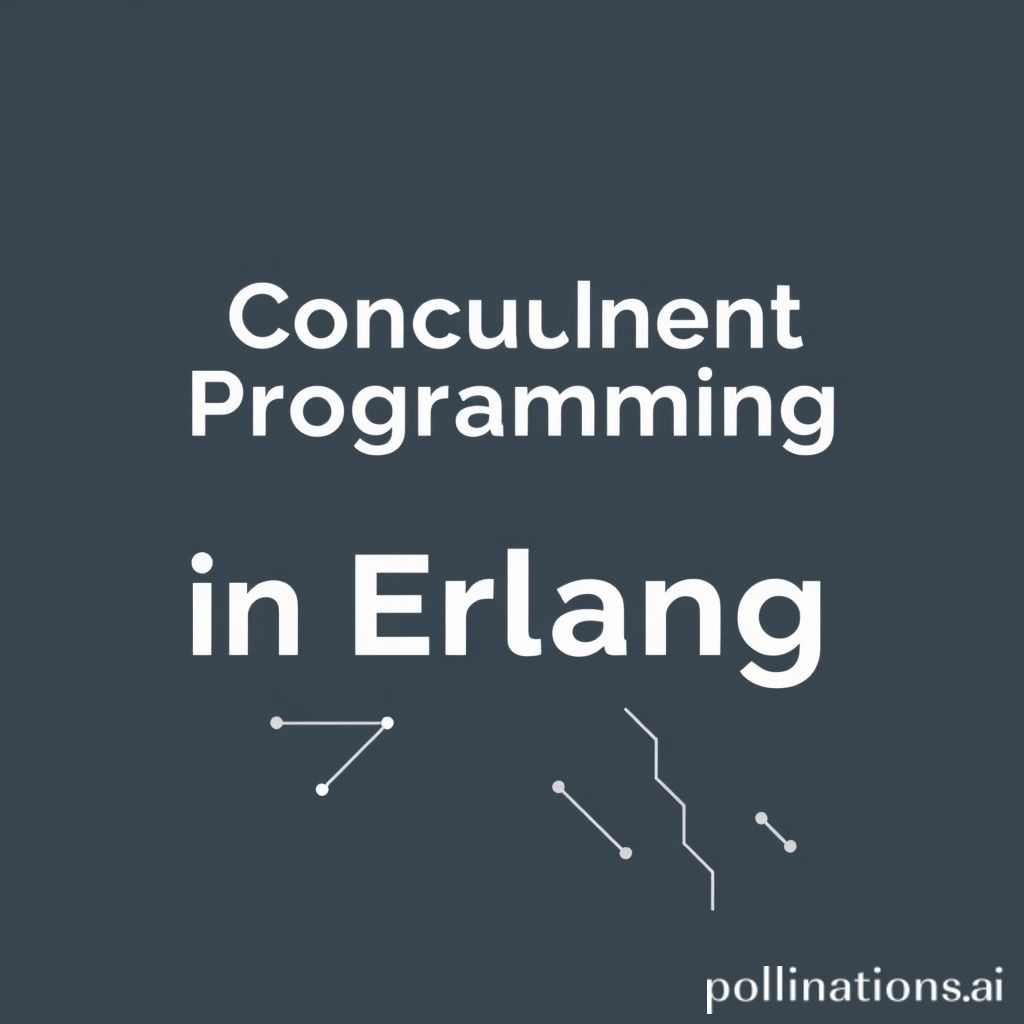
Concurrent Programming in Erlang
Introduction to Concurrency with Erlang
Erlang is a functional programming language designed for building highly concurrent, fault-tolerant, and distributed systems. Its concurrency model is a cornerstone of its design, enabling developers to create applications that can handle a large number of tasks simultaneously and gracefully recover from failures. Unlike many languages that rely on shared memory and threads, Erlang utilizes a lightweight process model with message passing, which significantly simplifies concurrent programming.
Lightweight Processes: The Foundation of Erlang Concurrency
At the heart of Erlang's concurrency are lightweight processes. These processes are not operating system threads; instead, they are managed by the Erlang Virtual Machine (BEAM). This makes them incredibly lightweight, allowing for the creation of thousands or even millions of concurrent processes without significant overhead. Key characteristics of Erlang processes include:
- Isolation: Each process has its own private memory space, preventing data corruption and race conditions.
- Lightweight: Processes are cheap to create and destroy, making it easy to spawn new processes as needed.
- Message Passing: Processes communicate with each other by sending and receiving messages.
Message Passing: A Safe and Scalable Communication Mechanism
Erlang's message passing mechanism is the primary way for processes to interact. This approach avoids the complexities of shared memory concurrency, such as locks and semaphores, which can be prone to errors. The process works as follows:
- A process sends a message to another process by specifying the recipient's process identifier (PID).
- The message is placed in the recipient's mailbox.
- The recipient process can then selectively receive messages from its mailbox using pattern matching.
This message passing model promotes a clean and predictable communication style, making it easier to reason about concurrent code.
Fault Tolerance: Building Resilient Systems
Erlang's concurrency model is closely tied to its fault-tolerance capabilities. Processes can be linked together, allowing one process to monitor another. If a monitored process crashes, the monitoring process receives a notification and can take appropriate action, such as restarting the failed process or delegating its tasks to another process. This "let it crash" philosophy encourages building robust systems that can automatically recover from errors.
Supervisors: Orchestrating Processes for Reliability
Supervisors are special processes that are responsible for managing and monitoring other processes. They define strategies for restarting failed processes, ensuring that the system remains operational even in the face of errors. Common supervisor strategies include:
- One-for-one: Restarts only the failed child process.
- One-for-all: Restarts all child processes if one fails.
- Rest-for-one: Restarts the failed child process and all processes started after it.
By using supervisors, developers can create hierarchical fault-tolerant systems that are capable of self-healing.
Conclusion
Erlang's concurrency model, based on lightweight processes, message passing, and fault tolerance, provides a powerful framework for building robust and scalable applications. Its focus on isolation and asynchronous communication simplifies concurrent programming and reduces the risk of common concurrency-related errors. Whether building telecommunications systems, web servers, or distributed databases, Erlang's concurrency features make it a compelling choice for demanding applications.
